-
Car Reviews
- All reviews
- Midsize SUVs
- Small cars
- Utes
- Small SUVs
- Large SUVs
- Large cars
- Sports SUVs
- Sports cars
- Vans
Latest reviews
- Car News
-
Car Comparisons
Latest comparisons
- Chasing Deals
Smart’s back with the #1 and #3 small SUVs but can these German-designed, Chinese-built EVs make an impact in the EV space?
It’s getting hard to keep up with new car brands launching in Australia, with Smart the latest to dive in with its #1 and #3 crossover SUVs.
Smart’s not completely new Down Under – from 2003 until 2015 the then Daimler-owned city car manufacturer sold its ForTwo and Roadster two-seaters through Mercedes-Benz dealerships. Their quirkiness and loyal fanbase couldn’t save them from the slow-sales chop almost a decade ago.
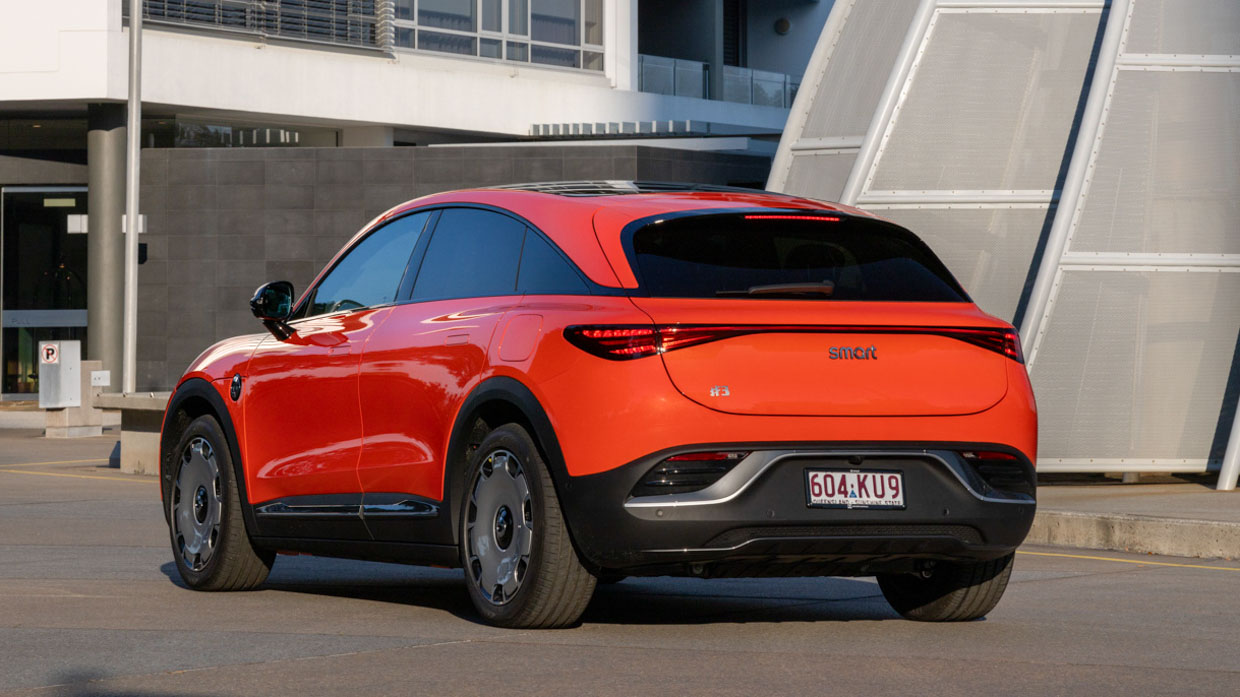
Pictured: the #3 in Premium guise
Now Smart’s back, this time EV-only and as a joint venture between Germany’s Mercedes-Benz and China’s Geely. The #1 and #3 (sadly, you must pronounce that ‘hashtag’ before the numbers) are German designed and Chinese built. They roll out from the same factory as other Geely products, but on a different production line.
Hence why these #1 and #3 EVs have the same underpinnings as Geely-owned Volvo EX30 small SUV EVs, and these Smarts must be seen as core rivals to the Swede-ish offerings, albeit at a lower price.
We’re combining our #1 and #3 reviews as they’re practically the same car but with different body shapes. The #1 has the more traditional SUV shape with high back end (with shrunken Mercedes EQB vibes), and the #3 the sleeker, sportier look with coupe-like rear styling.
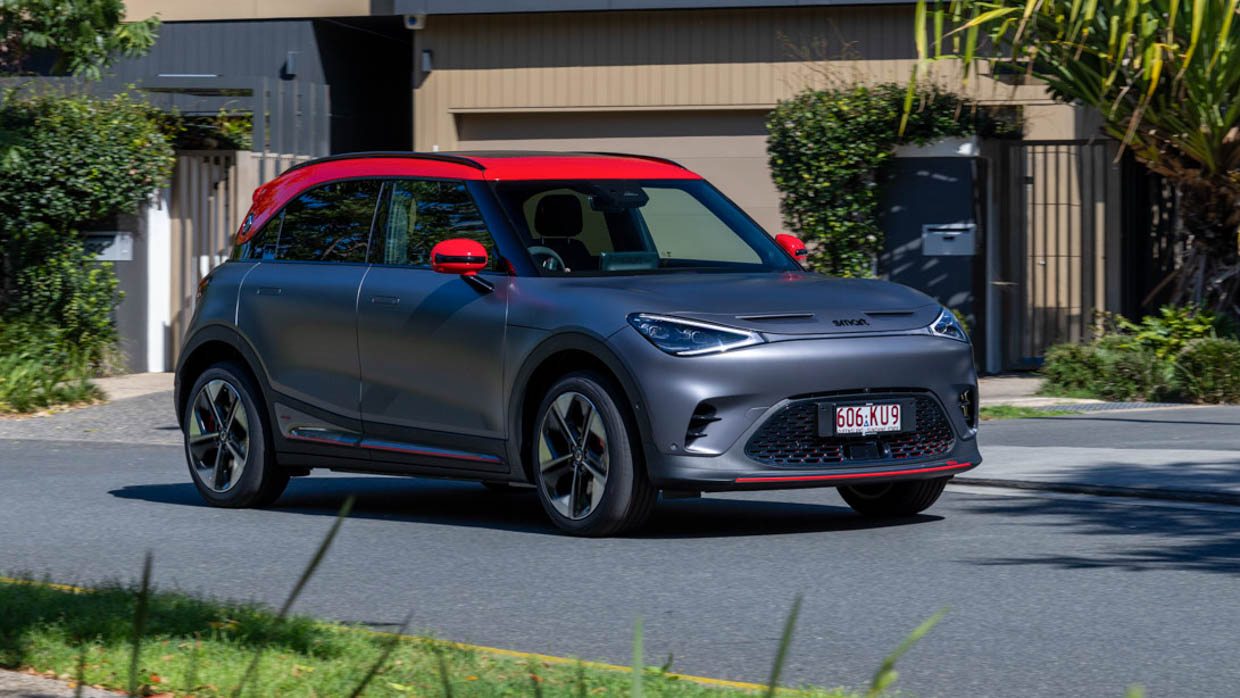
Pictured: the #1 in Brabus guise
The #1’s the more practical of the pair with better rear headroom and sliding rear seat, but the #3’s a better looking vehicle, plus with slightly lower and sport-focused suspension to appeal to keener drivers. It’s also even less of a ‘true’ SUV than the #1, as let’s be honest, these Smarts are basically (very slightly) raised five-door hatchbacks.
After a few minutes prodding and poking these new Smarts, I have a few takeaways. There’s clear Mercedes-style influence inside and out, from the #3’s A-Class type rear lights to the familiar Benz trio of air vents above the centre console. The familiarity and premium associations here do the cars no harm at all.
There’s decent cabin style, features and soft touch points, and it’s easy to get charmed by these new EV offerings.
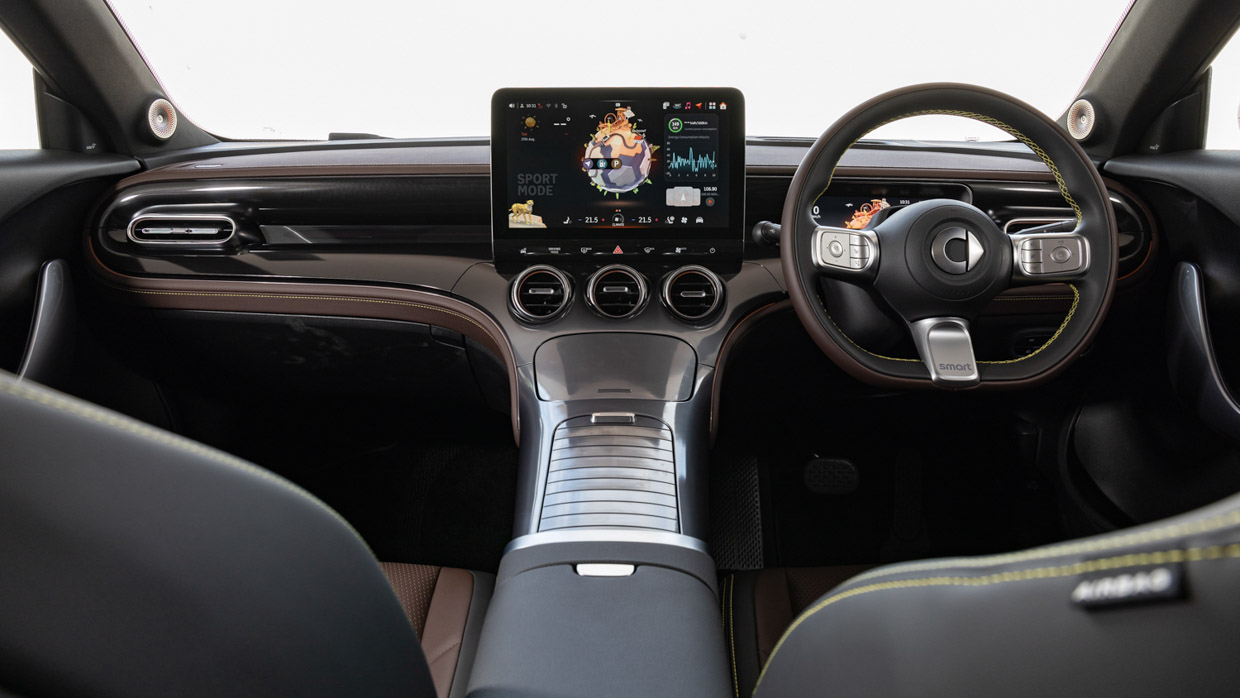
Pictured: the Smart #3 Premium
Then I see the old Smart badge I associate with the city hero ForTwo and blindingly fun mid-engine Roadster, and get disappointed.
The #1 and #3 are the ‘smart’ size choice for our market addicted to small SUVs, but there’s something that’s been lost: the old Smart’s innovation and dare-to-be-different attitude. But, as accountants will remind us, that didn’t help it sell enough cars. Smart’s gone pragmatic and predictable.
Not boring, though. While most of these Smarts use a rear-mounted single electric motor good for 200kW and 343Nm, flagship Brabus grades bring twin motors, all-wheel-drive and 313kW/584Nm.
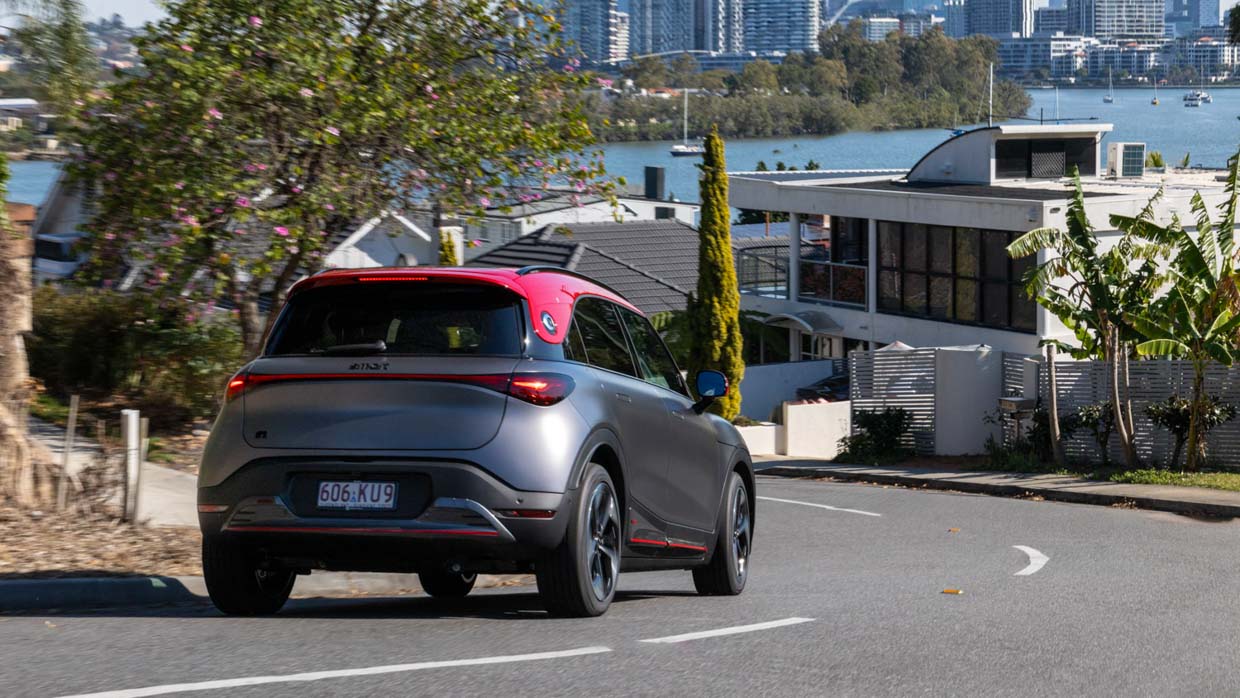
The #1 Brabus cracks the 0-100km/h sprint in 3.9 seconds, while the slippier #3 does so in 3.7. If acceleration’s your thing, there are very few cheaper ways to reach the ton in under four seconds. Volvo’s EX30 will do likewise, but costs roughly $10k more than the #1 Brabus’s $67,900. The #3 Brabus is $70,900, all plus on-roads.
But like the Volvo EX30 Twin Motor, such performance and acceleration simply isn’t suited to such an SUV, nor their expected buyer type. There’s not the chassis nor tyres to turn these cars into enjoyable sporting machines, making the single motor grades the pick.
The #1 Pro+ entry-level costs $54,900 and fancier Premium $58,900. #3 versions in the same trims add an additional $3000.
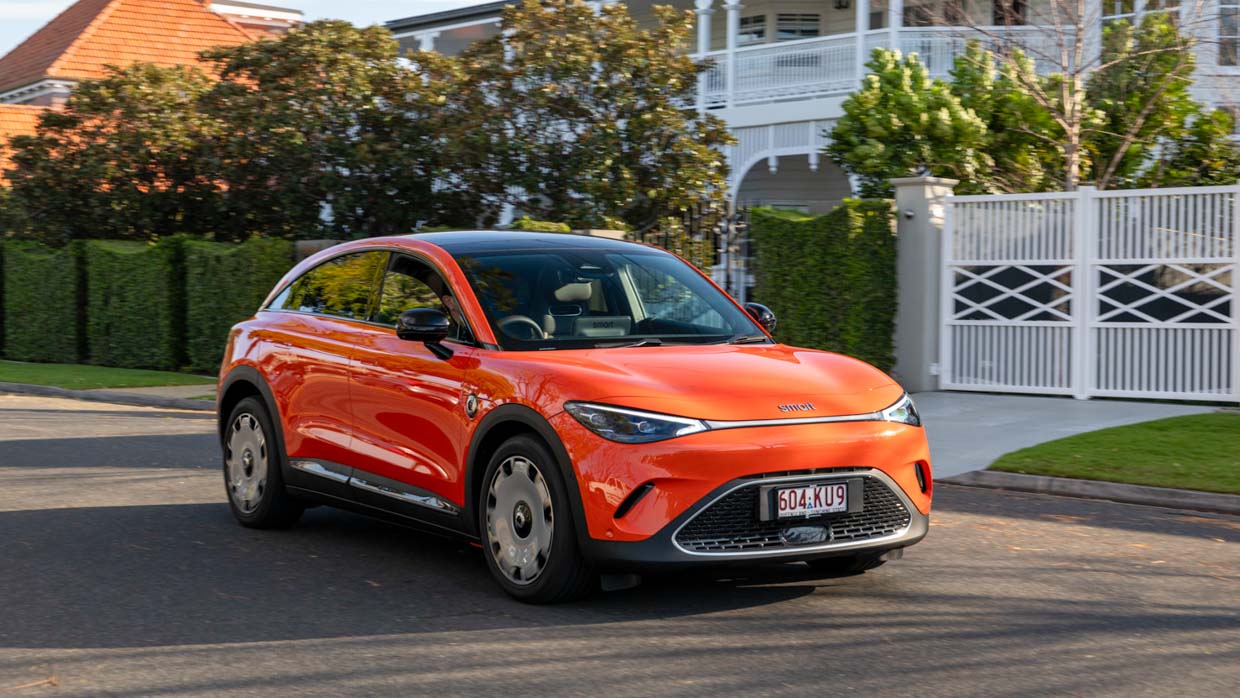
As we’ve previously reported, a catch with these new Smarts is where you can buy them. Unlike before, there’s no affiliation with Mercedes-Benz Australia. Smarts are exclusively imported and sold by LSH Auto, a giant conglomerate operating three Mercedes-Benz dealerships in Australia: Brisbane, Sydney and Melbourne.
Each of these have their own Smart showroom within the main Benz dealership, and – for now – these are the sole points of sale for the #1 and #3.
he Brisbane Smart showroom we experienced was a beautifully presented and professional setup, but potential buyers outside these urban centres will find Smart ownership more challenging.
Specification is basically shared across the Pro+, Premium and Brabus grades of #1 and #3.
Key highlights of the #1 and #3 Pro+ include:
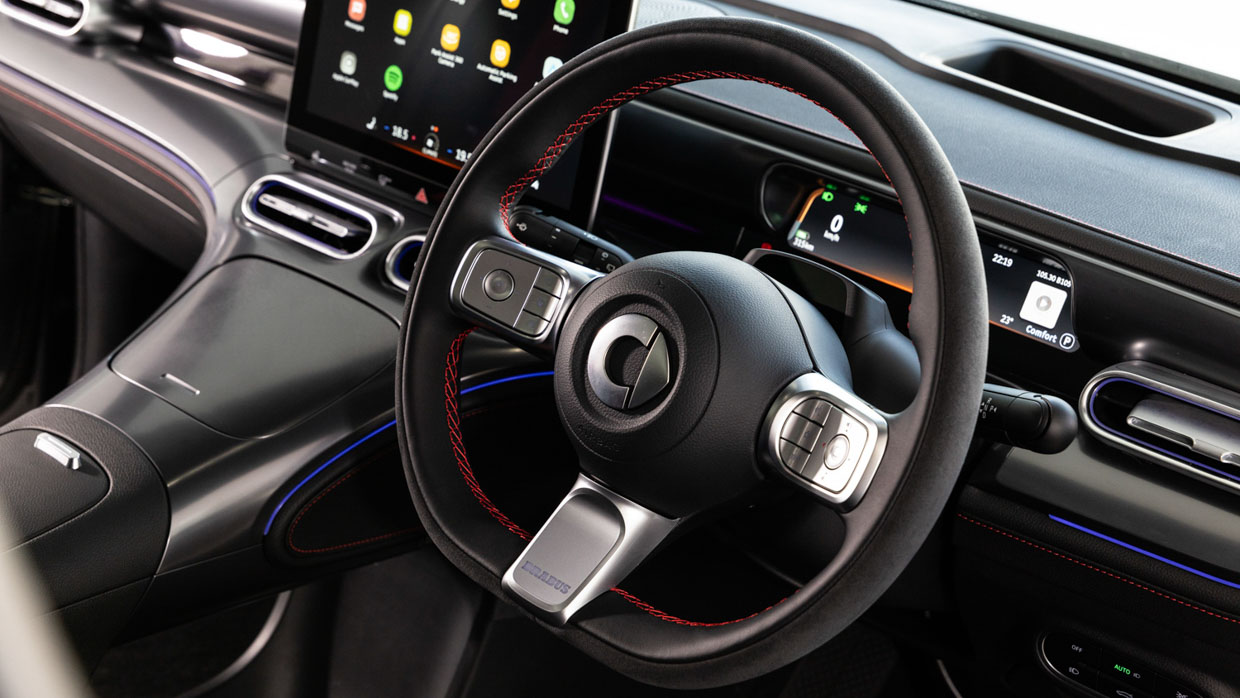
#1 and #3 Premiums add:
#1 and #3 Brabus add:
There’s a range of dull and bright colours, including black, white, silver, red, green, yellow, blue and a matte grey.
The #3 adds exclusive colours: Ceramic cream, Photon orange, matte Electron blue, Solar silver and even Sonic pink.
Unfortunately, our drive test route was a limited affair. We sampled the cars in their element (city life) only briefly, then some slow back roads with barely a corner to enjoy, before being lumbered with rush hour highway traffic.
Having to rapidly test the #1 and #3 in single-motor and dual-motor guises added to the rushed nature, making it hard to get a decent impression of what life’s like with one of these new Smarts.
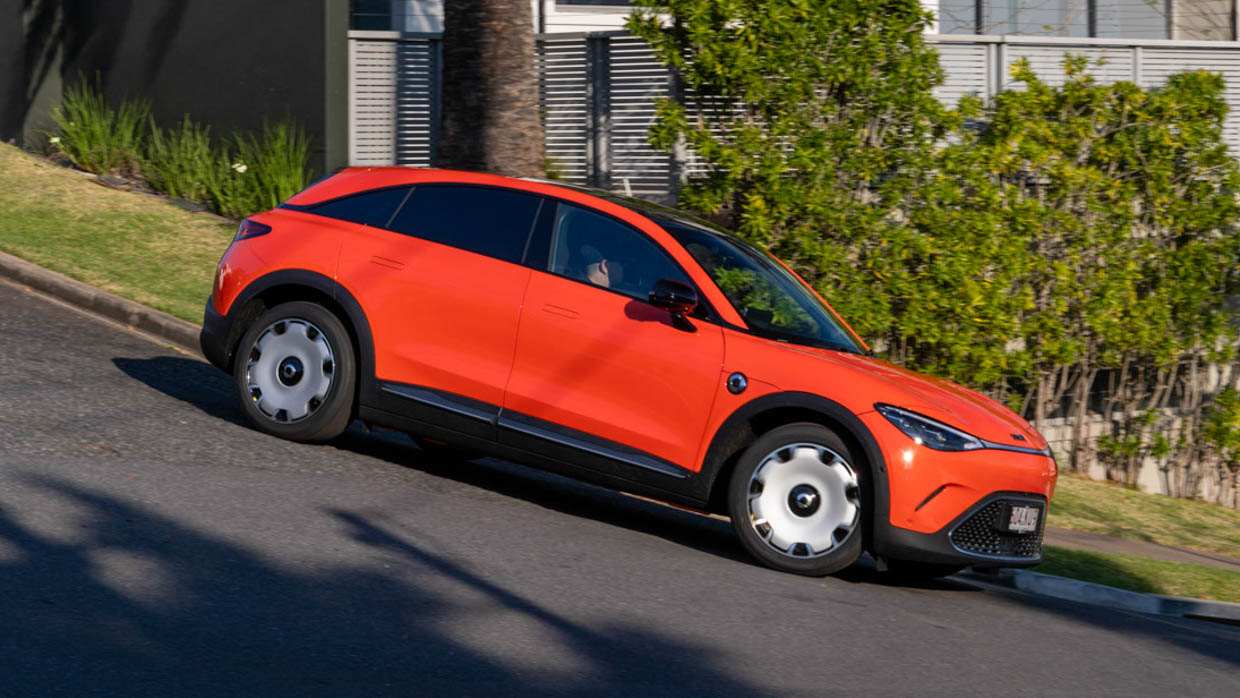
But my Spidey Senses quickly decided the drive experience – as expected – was similar to the closely-related Volvo EX30. And mirroring my EX30 views, it’s the single motor rear-wheel-drive Smarts that are the better package than the supercar-rapid but not supercar-resolved twin-motor Brabus.
Starting with the Pro+ and Premium, the drive is slightly different if you pick #1 or #3. The latter’s 15mm longer but 60mm lower thanks to the roofline and lowered suspension, and is 40kg lighter – 1780kg versus the #1’s 1820kg.
The #3’s handling and response feels marginally more tied-down and controlled than the #1, but neither disgraces itself. While fun and driver involvement aren’t front and centre, there’s neat body control, ample grip and the rear motor has all the shove anyone driving this type of car needs.
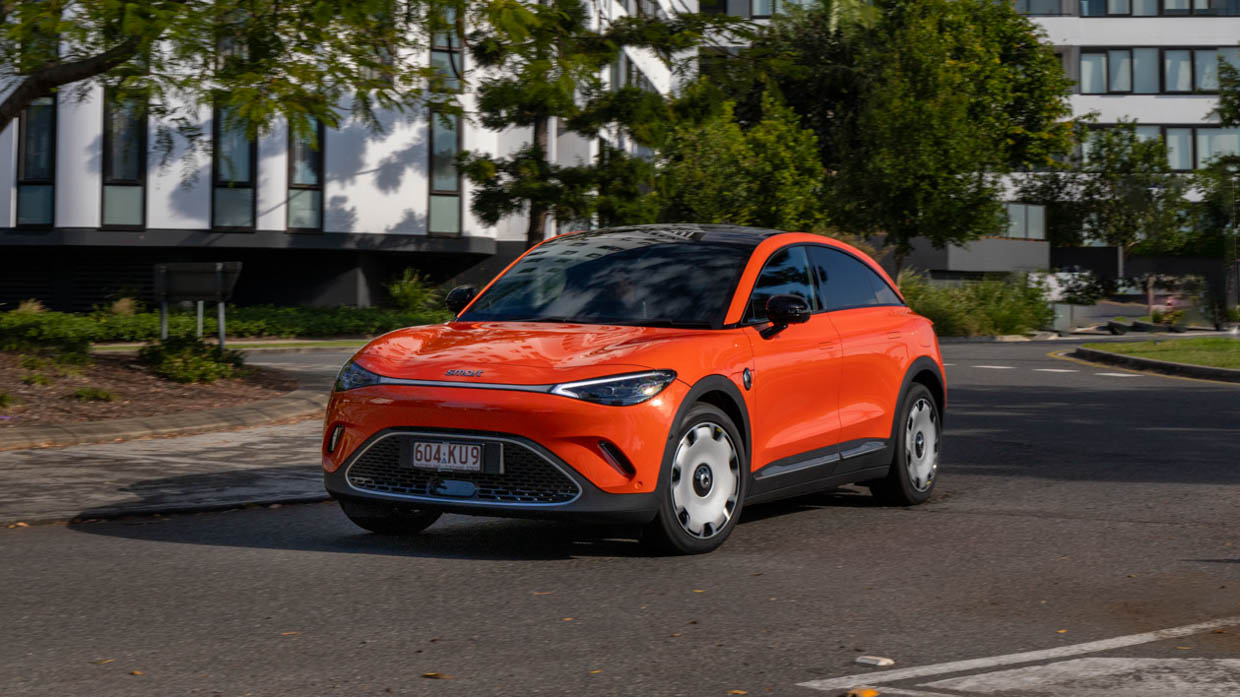
It’ll do 100km/h in 6.7 seconds – old hot hatch figures – while pushing on a bit you can even make the rear end squirm around to bring some smiles.
But as so familiar with EVs, the likes of steering, throttle and brake feel have largely gone missing. It’s better the embrace the Smarts’ qualities, and that includes a largely comfy, composed and quiet ride (some tyre roar aside), and lovely light and easy controls for urban life.
Over choppy and poor roads the Smarts feel overly firm, but I’d take this trade-off for its decent cornering manners.
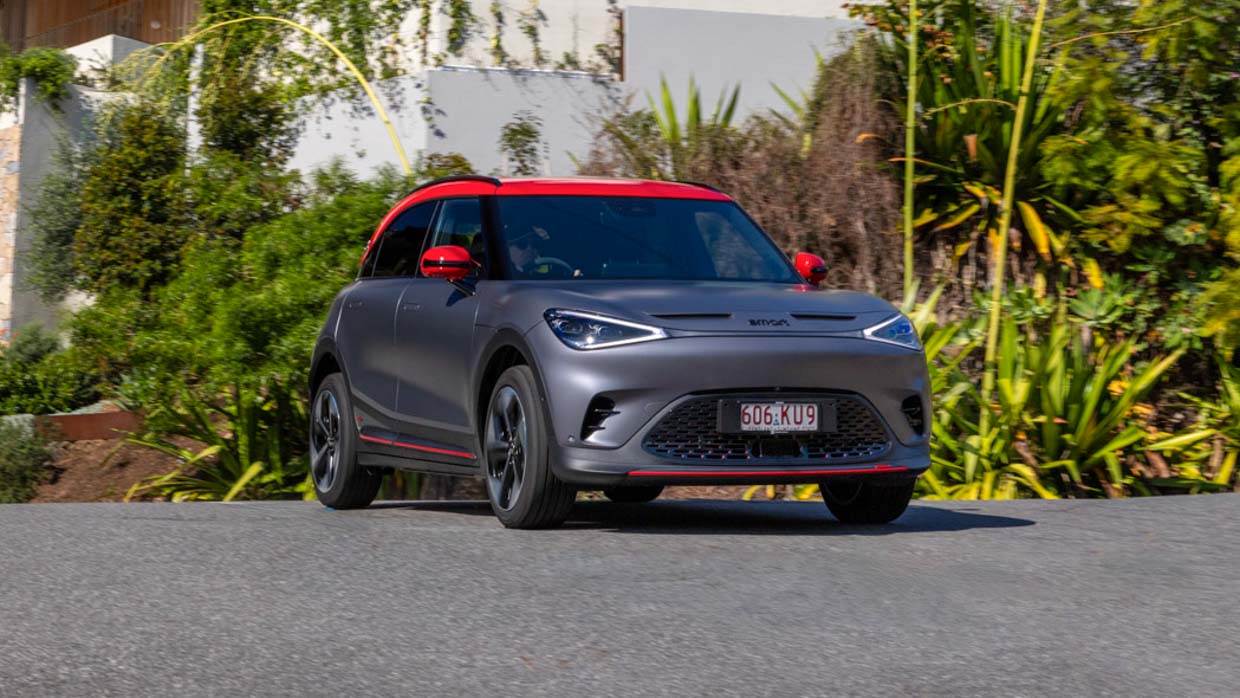
We never quite got to grips with the regeneration. There are no shift paddles to switch between modes, rather you must (annoyingly) go through the touchscreen. Even in the strongest regen mode it could have used more boost to make one-pedal driving easier.
Now, the Brabus. I love fast cars as much as the next red-blooded chap, but there’s just too much power here without the required responsibility. Same as the Volvo EX30 Twin Motor.
Both the #1 and #3 crack four-seconds to 100km/h, and while the all-wheel-drive reins some of it in, the tyres, suspension and brakes really don’t feel like they’re a safe match if you start exploiting all that performance.
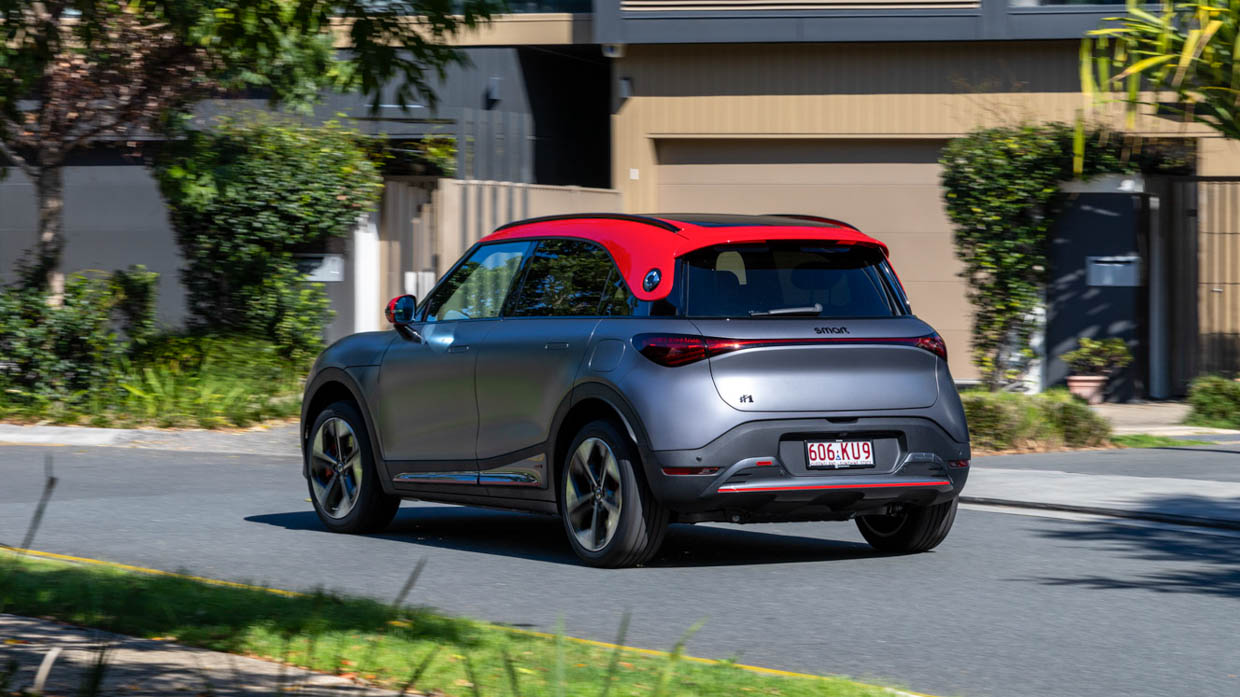
As a reminder, there’s 313kW and 584Nm on tap, so it’s ballistically quick in a straight line and the response near instant. I reckon serious performance fans would stomach an extra $10k on the Brabus bill to buy properly sticky tyres and racier suspension, much as Polestar did with its 2 Performance weapon.
I don’t want to be too harsh on the Brabus as I love its heritage with the Smart brand; the microfibre suede interior feels fantastically racy, and I even appreciate the pretend engine noise it makes. And kudos must be given to it being the cheapest sub-four second car you can buy.
But this is Smart. And the smartest cars are the rear-drive versions, with my pick the #3 for its sportier nature and prettier looks.
Fair play to Smart, all grades have a solid air of interior class. They’re comfortable, roomy for the segment, and beautifully lit under a giant panoramic roof.
There’s Benz DNA throughout – a brand with serious credentials on how to present a car’s cabin – yet there’s a more youthful, playful and welcoming feel. They’re quirky and interesting without being naff, which can’t be said for a number of Chinese-produced EVs we’ve seen in recent years.
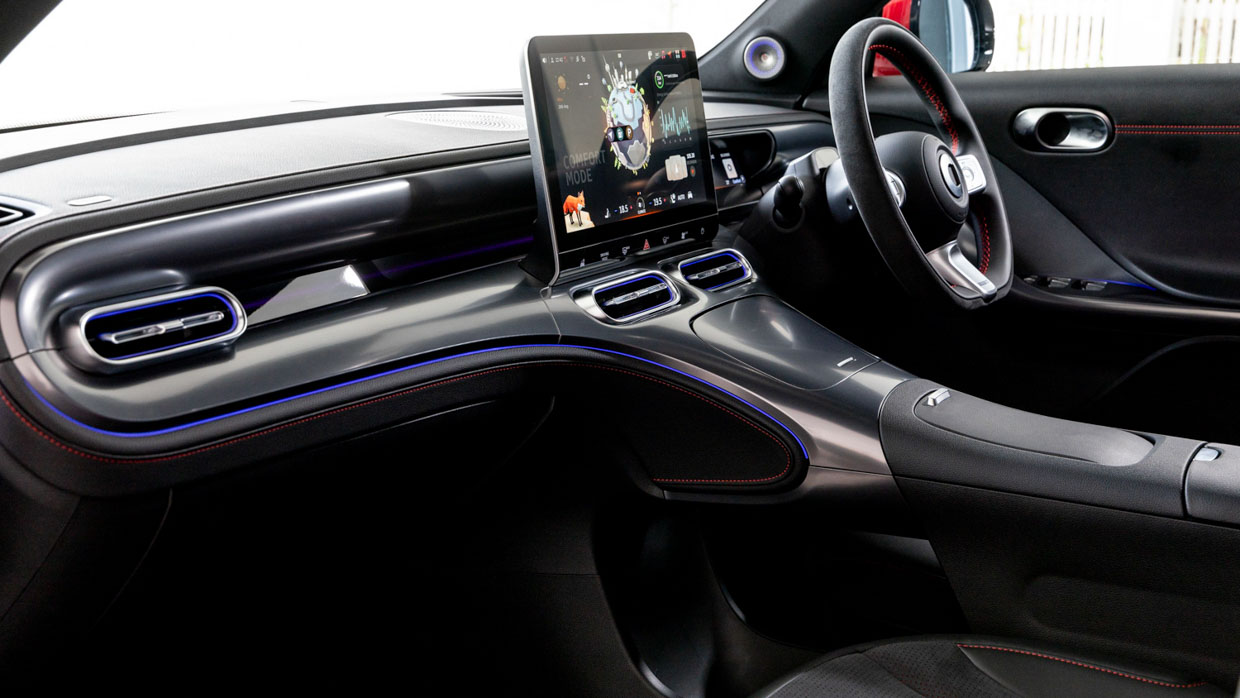
Pictured: the #1 Premium
The centre console varies between the #1 and #3, with the former having skinny air vents and the latter sporting a more Benz-like trio of circular blowers. Both have numerous clever storage spots (over 20 spaces throughout), including a giant open cubby beneath the high centre console.
Seats in the Pro+ are fabric but beautifully soft, and feature a neat panel design with rivets between the stitches. It’s different, eye-catching and two-tone, as is the flat-bottom steering wheel with colourful stitching.
Dash and door tops are soft touch plastic, and even the lower down hard plastics feel of fair quality, including for the rear occupants. Dig a bit deeper and you’ll find flimsier plastics, but for the money, it’s rather impressive overall.
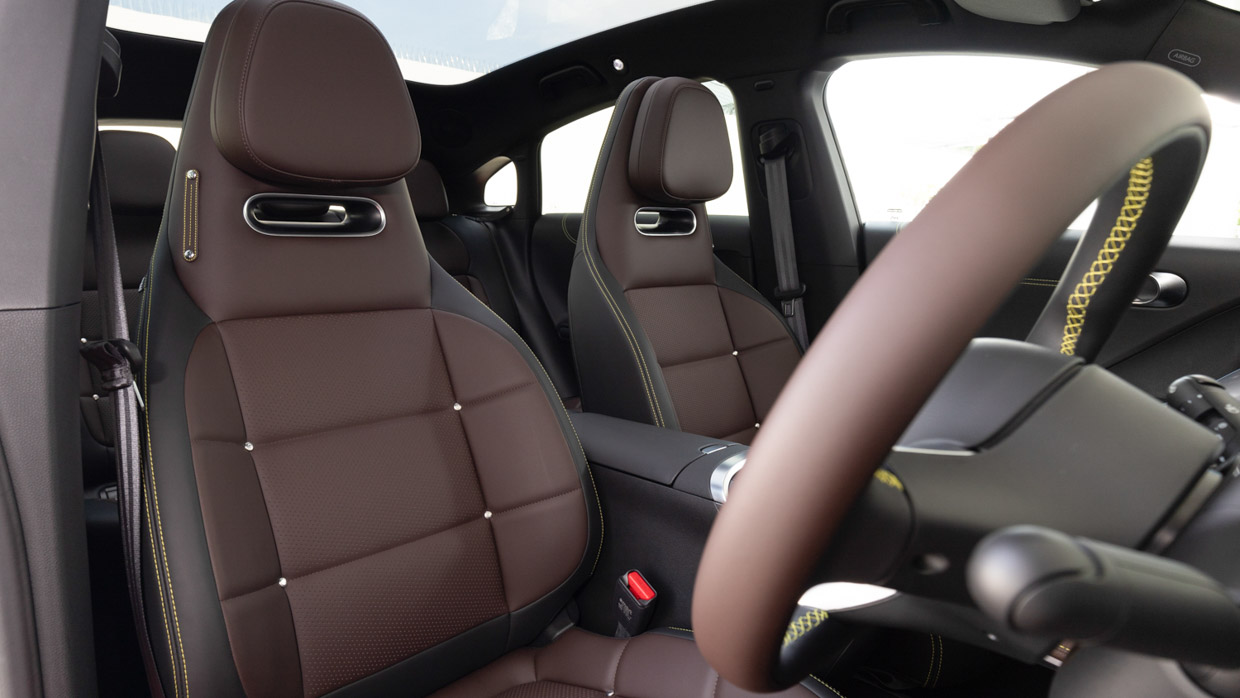
Pictured: the #3 Premium
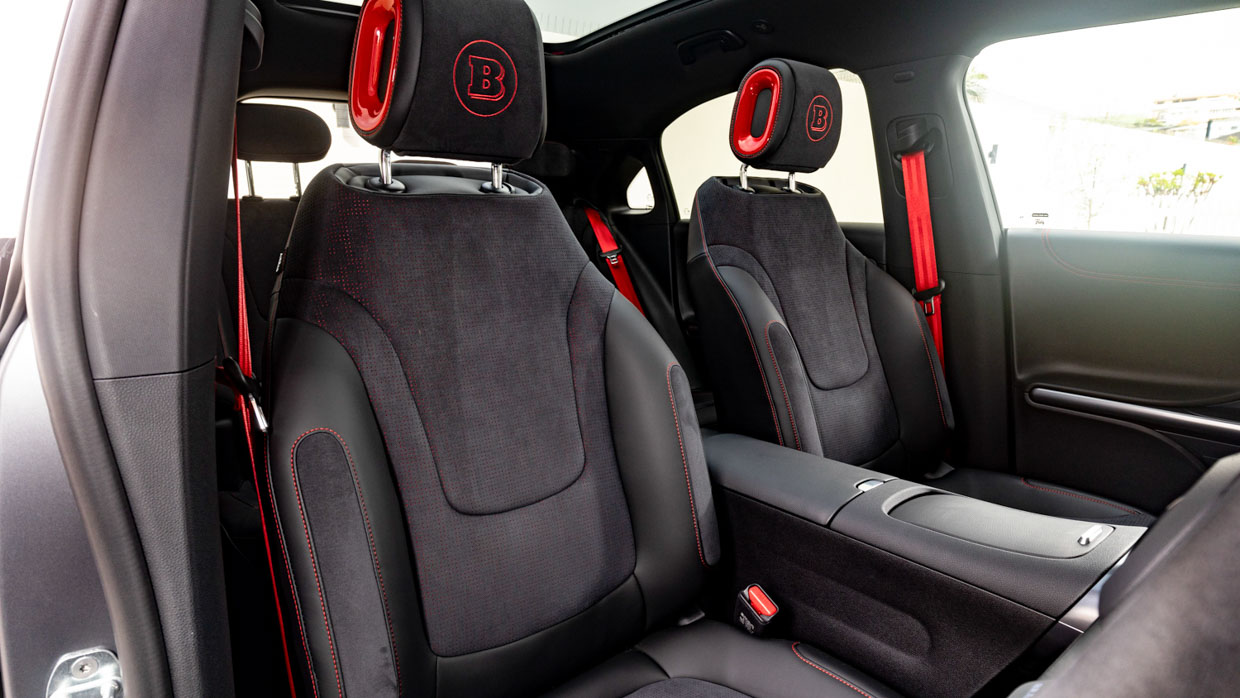
Pictured: the #1 Brabus
There is some weirdness to contend with, starting with a circular disc serving as your smart key. Then there’s the giant 12.8-inch infotainment screen. It’s crisp and fast operating, but we couldn’t change the distracting, busy and frankly unnecessary screen background which belonged in an anime comic.
There’s also your animal accompaniment. The #1 has a fox avatar and the #3 a cheetah avatar in the screen, supposedly there to be a travel partner to engage with. Maybe the kids will love it, but it all seems a bit pointless – it’s a car, not a video game. Let’s keep distractions to a minimum.
While I’m grumbling, only the Brabus has a sliding cover for the giant glass roof. As our Queensland early summer test proved, a long drive with bright light constantly flooding in eventually gets tiring.
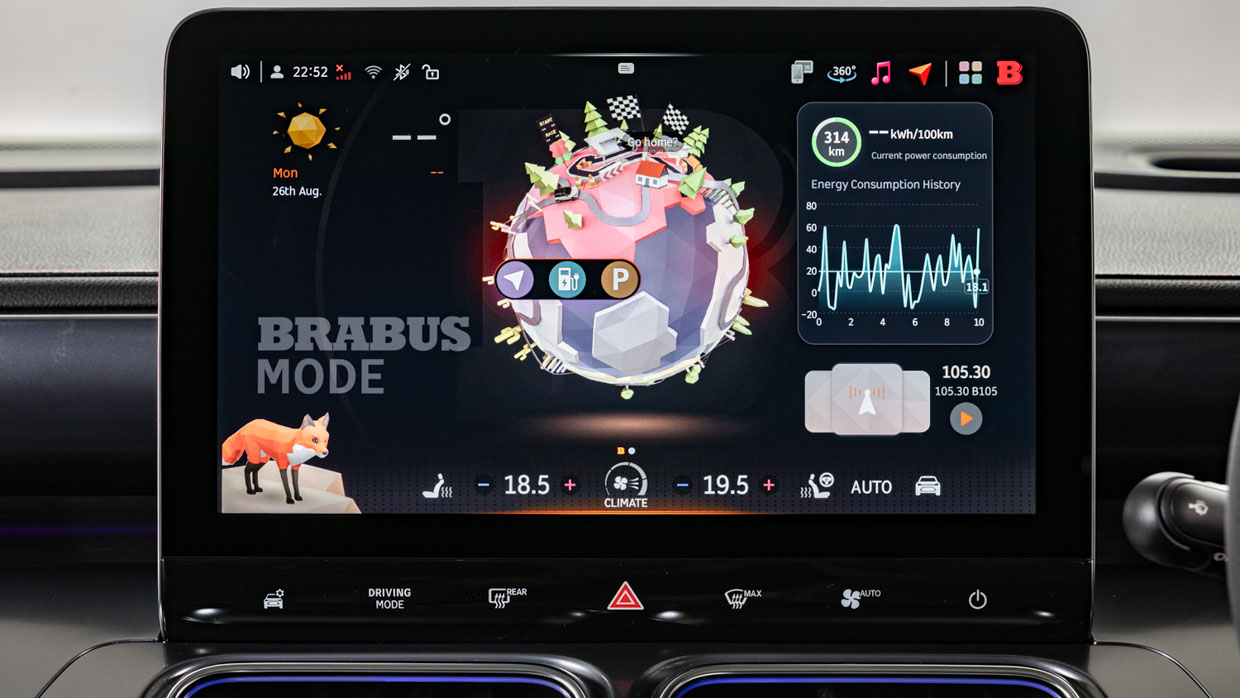
Praiseworthy is the letterbox-like digital driver display. It’s skinny, perfectly placed through the steering wheel, and gives you all your vitals with nothing superfluous.
Even the Pro+ feels very well specified. Key stuff like heated power seats, wireless phone charging and wireless Apple CarPlay and Android Auto through the mighty screen lend credibility to Smart’s desire to be seen as prestige.
A cool box under the centre armrest is superb, and if you move into the Premium for an extra $4000 (seems money well spent), the faux leather seats really ups the luxe. These chairs are properly spongey, cosy and supportive.
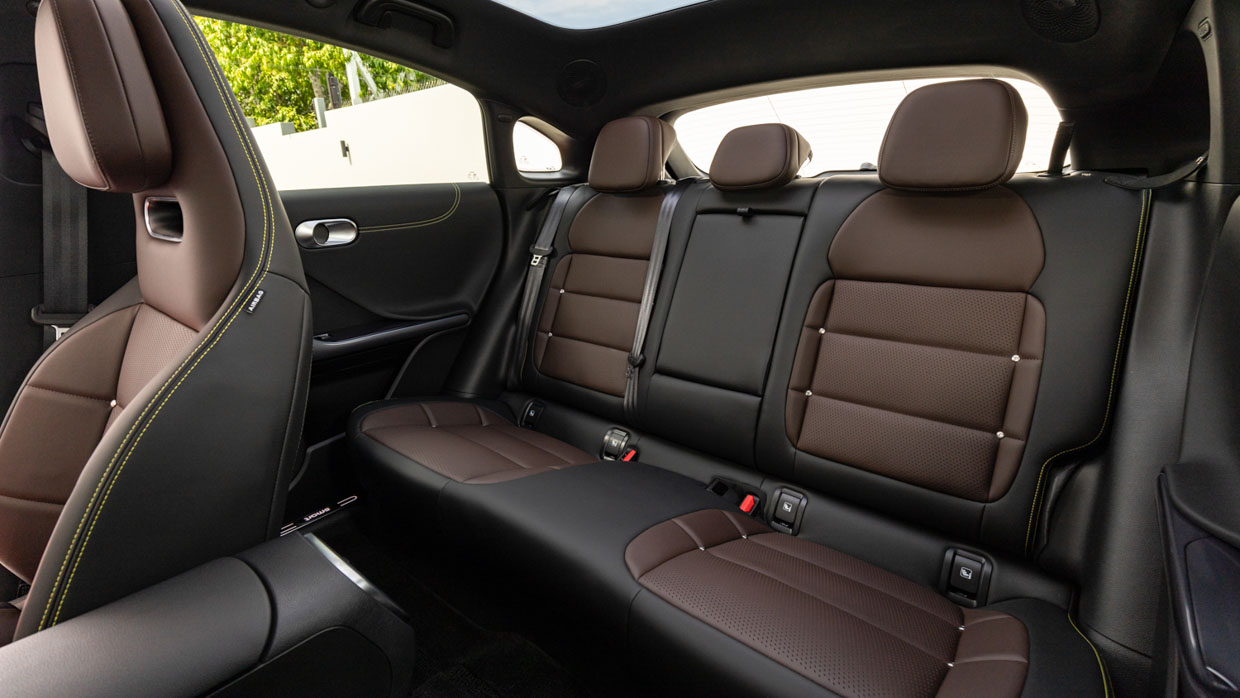
If you go Brabus, things start feeling quite AMG. Microfibre suede adorns the seats and steering wheel, while there’s redness overload for seatbelts, dash, vent surrounds and stitching.
Rear seats space is great for kids, and will happily accommodate two adults. There are air vents and a couple of USB ports (one A, one C), and that glass roof goes all the way to the back of the rear compartment.
The #1 is more practical with sliding rear seats (not possible with the #3), and although they can’t be reclined, their position is laid back. Smart suggested rear seat space in the #1 is comparable to a Mercedes E-Class, but I’m not entirely convinced.
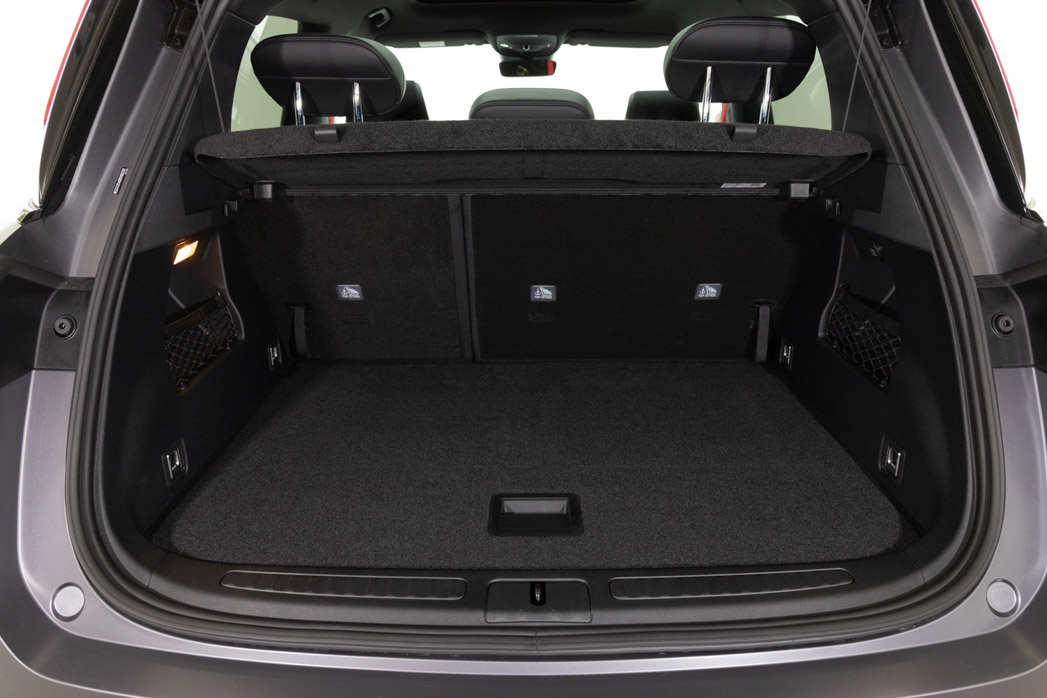
Kudos for electric tailgates all round, but the boot’s not standout. The #1 offers just 323L, while the #3 is the bigger one on account of the car’s extra length. But the likes of a Hyundai Kona EV or Kia Niro EV offer substantially more.
There’s a false floor with tyre repair kit underneath, while there’s a small storage ‘frunk’ under the bonnet to hold your charging cable.
The Smarts don’t have an ANCAP rating, but have been Euro NCAP crash tested, where they received the maximum five stars.
The Smart #1 was tested in 2022 and scored 96 per cent for adult occupant safety; 89 per cent for child occupant safety; 71 per cent for pedestrian safety and 88 per cent for safety assist.
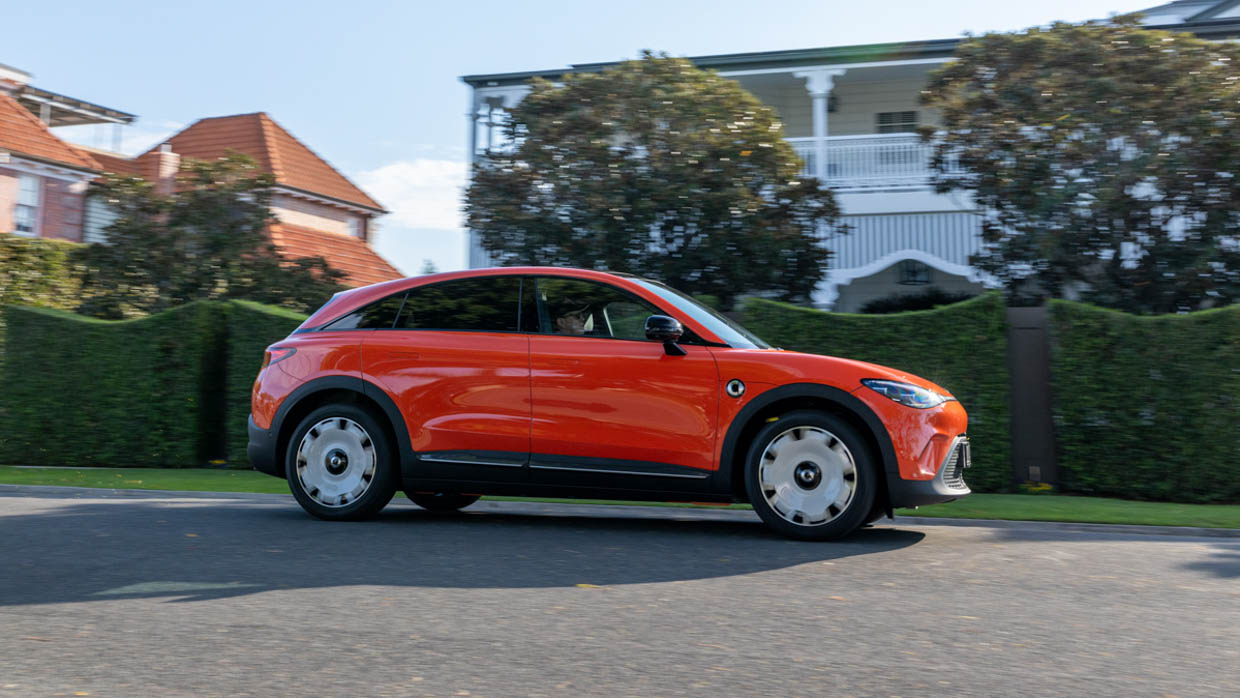
The Smart #3 was tested in 2023 and scored 90 per cent for adult occupant safety; 86 per cent for child occupant safety; 84 per cent for pedestrian safety and 85 per cent for safety assist. Solid numbers.
Safety and drive assist tech is lengthy, but the speed limit warning, driver monitor and lane keep features proved invasive and annoying enough to see us turn them off on our test drive.
Included features are:
It’s early days and Smart didn’t reveal service costs, but promises service plans will be available to customers. Services are yearly/20,000km.
Disappointingly, the warranty is only five years/150,000km. For a new brand keen to quickly gain trust, it’s surprising Smart hasn’t matched other newbies with seven years or more, while not having unlimited kilometres is poor form.
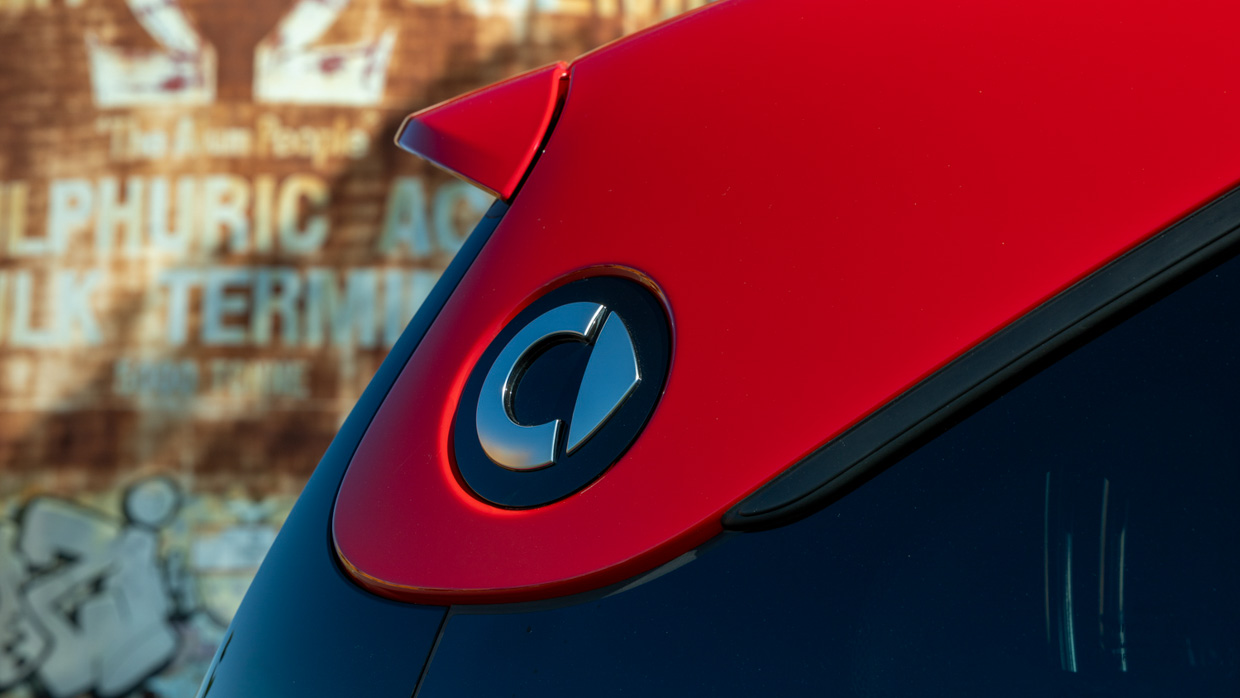
As with all EVs, running costs depend a great deal on how and where you charge them. No complimentary public charging from Smart, unlike that offered by some premium EV brands.
In terms of energy use, official figures are 16.8kWh/100km (Premium); 17.4kWh/100km (Pro+) and 18.2kWh/100km (Brabus).
Our test, although not over as varied a course as we’d have liked, returned 15.8kWh/100km the Pro+, and 18.5kWh/100km the Brabus, suggesting the energy use claims to be accurate.
Due to the #3’s better aerodynamics and lighter weight, its range is up to 455km on the WLTP cycle, while the #1’s best effort is 440km, both in Premium grade.
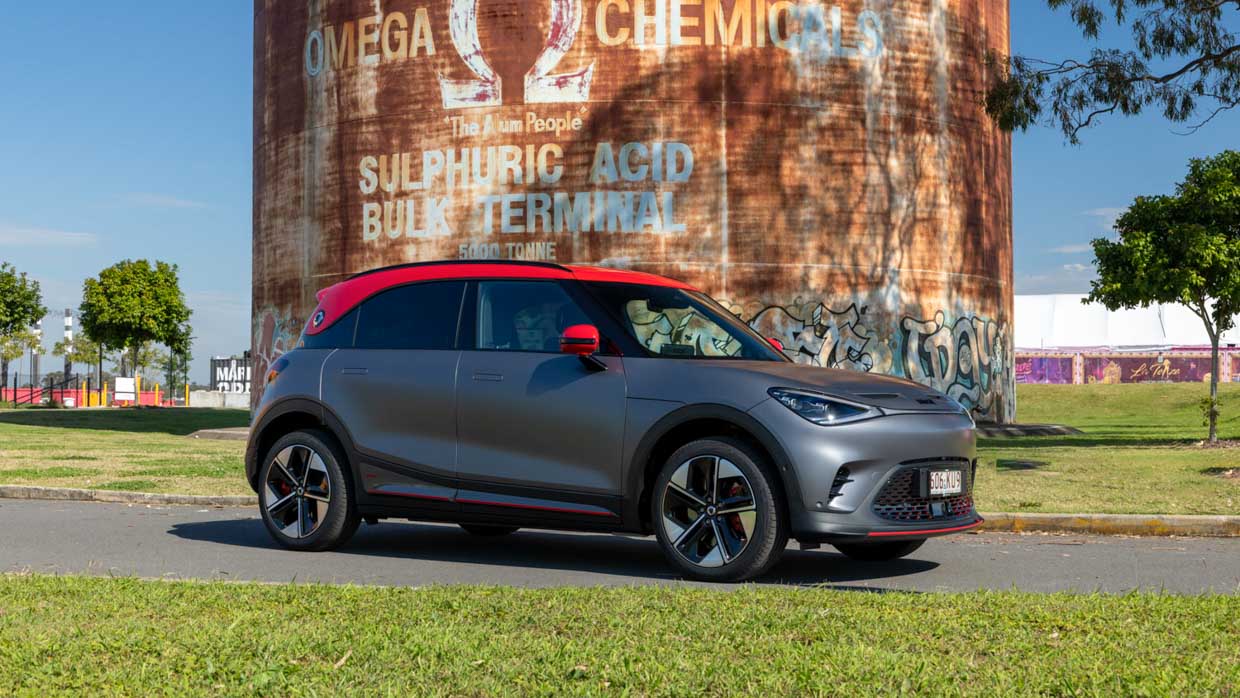
The Pro+ ranges are 435km and 420km respectively, while dual motor Brabus models offer about 400km. For most owners, these numbers are plenty.
Maximum power is 150kW using a DC public charger, with the charge time’s quoted as 30 minutes to go from 10-80 per cent battery.
A 7.4kW home wallbox will do the same job in under seven hours, but the Premium and Brabus can take AC charge rates of 22kW, so this would complete the task in less than three hours.
We’re overwhelmed with new EVs this year, especially Chinese-sourced efforts, but these Smarts feel pleasingly different. The Benz collaboration has reaped rewards on the style, cabin presentation and buying experience fronts, and considering their equipment, look decent value too.
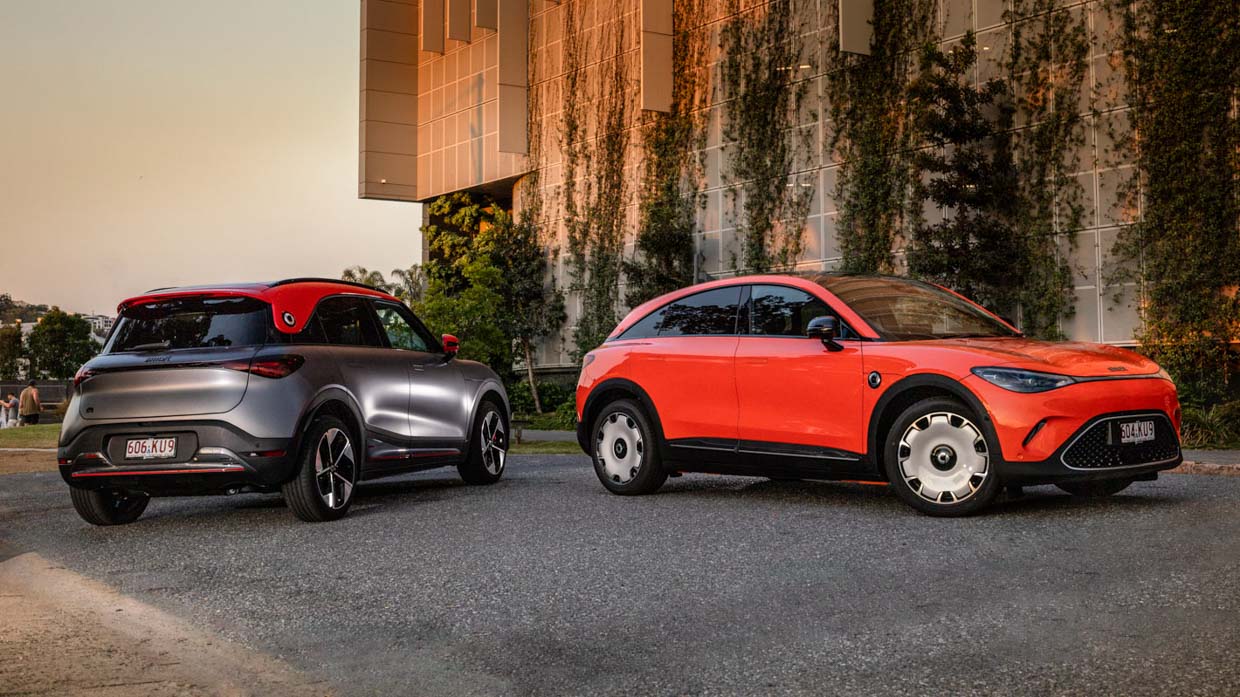
Only three purchase outlets, not-great warranty and small boots are the main black marks, and we’ll need to live with these Smarts for a week or so to properly evaluate them. But on first impressions, they’re pleasing things to sit inside and drive, while EV range meets most buyers’ targets.
The #3 in Premium grade is the pick for style and spoil-yourself luxury, while the Brabus is there for those wanting to flirt with madness.
About Chasing cars
Chasing Cars reviews are 100% independent.
Because we are powered by Budget Direct Insurance, we don’t receive advertising or sales revenue from car manufacturers.
We’re truly independent – giving you Australia’s best car reviews.
The estimate provided does not take into account your personal circumstances but is intended to give a general indication of the cost of insurance, in order to obtain a complete quote, please visit www.budgetdirect.com.au. Estimate includes 15%^ online discount.
^Conditions Apply
Budget Direct Insurance arranged by Auto & General Services Pty Ltd ACN 003 617 909(AGS) AFSL 241 411, for and on behalf of the insurer, Auto & General Insurance Company Limited(ABN 42 111 586 353, AFSL 285 571).Because we don’t know your financial needs, we can’t advise you if this insurance will suit you. You should consider your needs and the Product Disclosure Statement before making a decision to buy insurance. Terms and conditions apply.
Indicative quote based on assumptions including postcode , 40 year old male with no offences, licence suspensions or claims in the last 5 years, a NCD Rating 1 and no younger drivers listed. White car, driven up to 10,000kms a year, unfinanced, with no modifications, factory options and/or non-standard accessories, private use only and garaged at night.
^Online Discounts Terms & Conditions
1. Discounts apply to the premium paid for a new Budget Direct Gold Comprehensive Car Insurance, Third Party Property Only or Third Party Property, Fire & Theft Insurance policy initiated online on or after 29 March 2017. Discounts do not apply to optional Roadside Assistance.
2. Discounts do not apply to any renewal offer of insurance.
3. Discounts only apply to the insurance portion of the premium. Discounts are applied before government charges, taxes, levies and fees, including instalment processing fees (as applicable). The full extent of discounts may therefore be impacted.
4. We reserve the right to change the offer without notice.